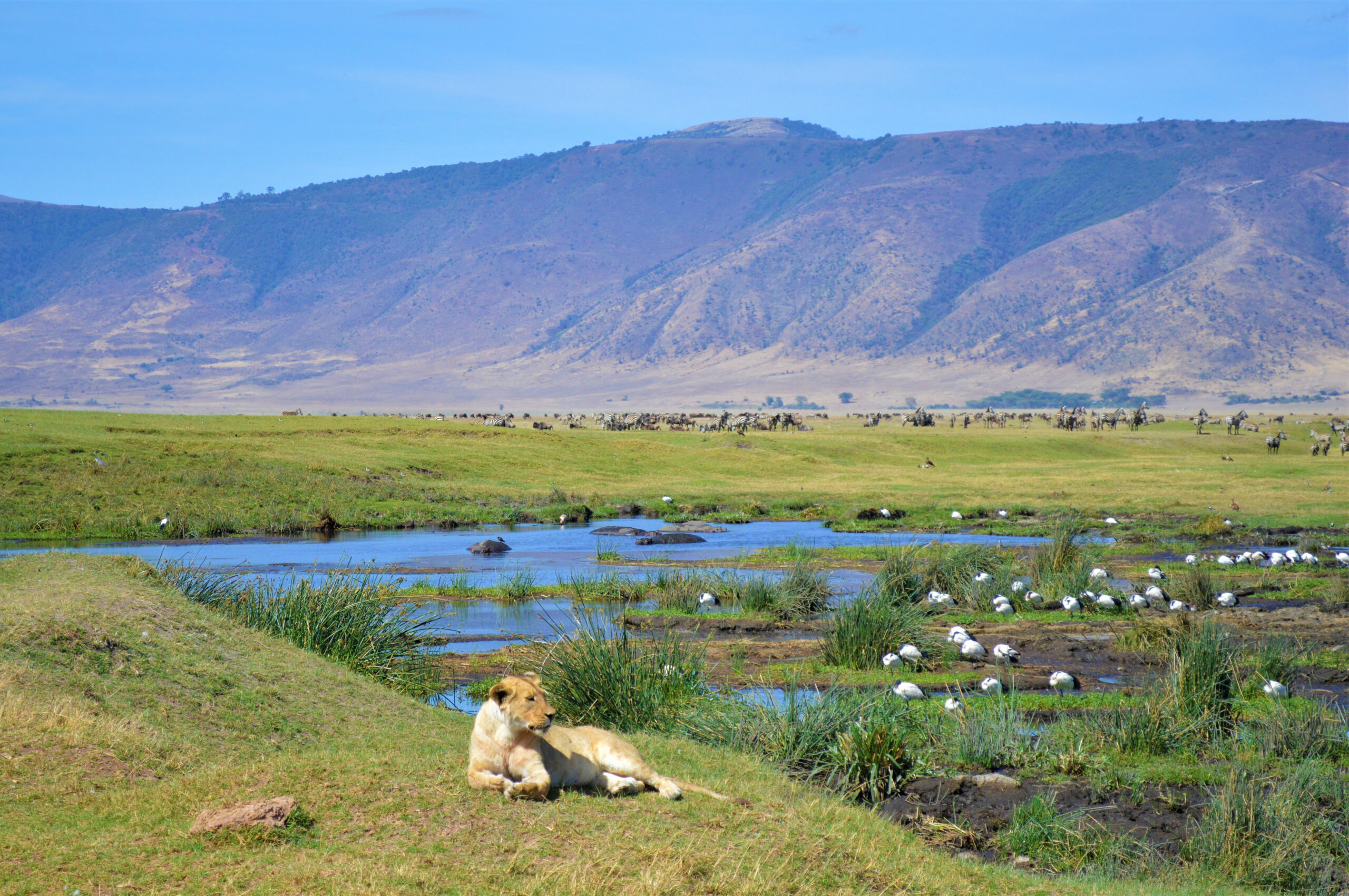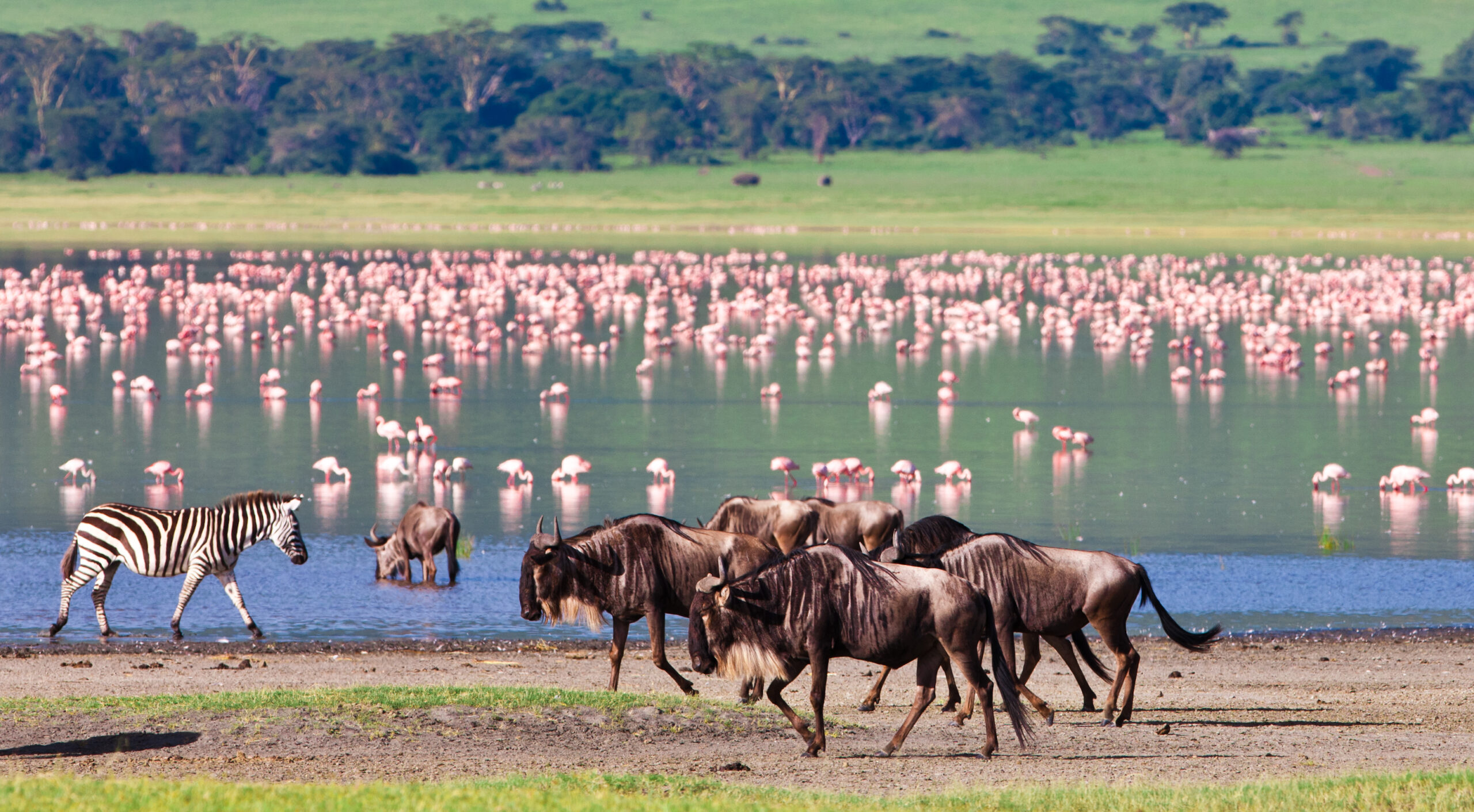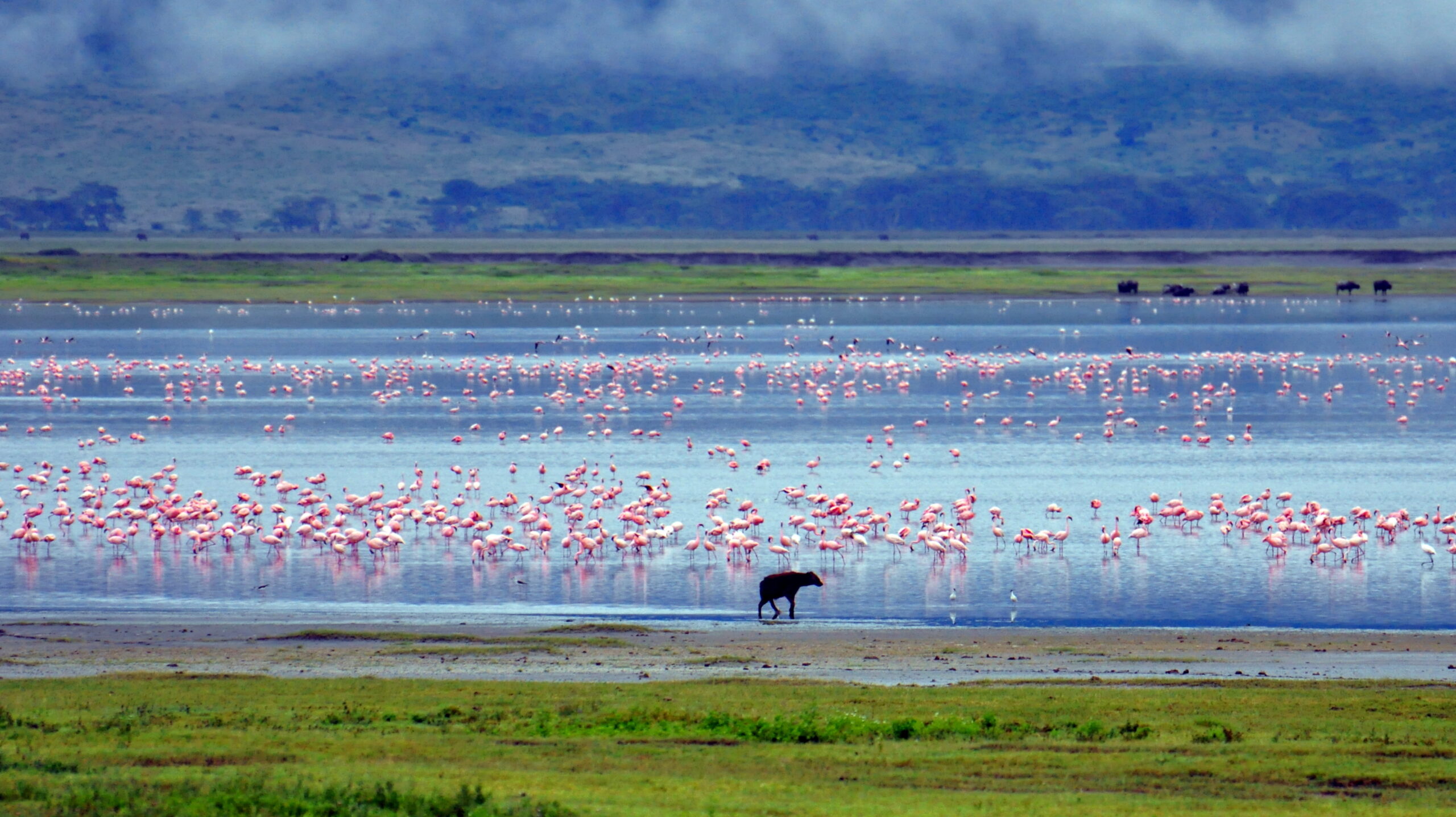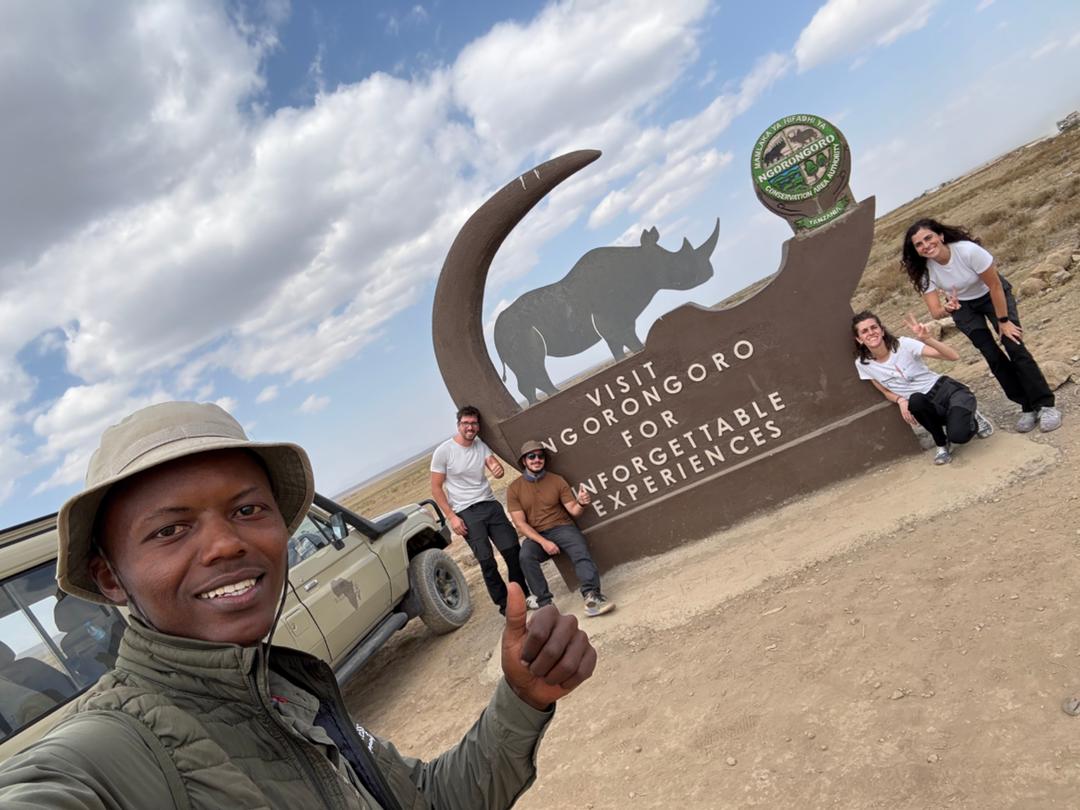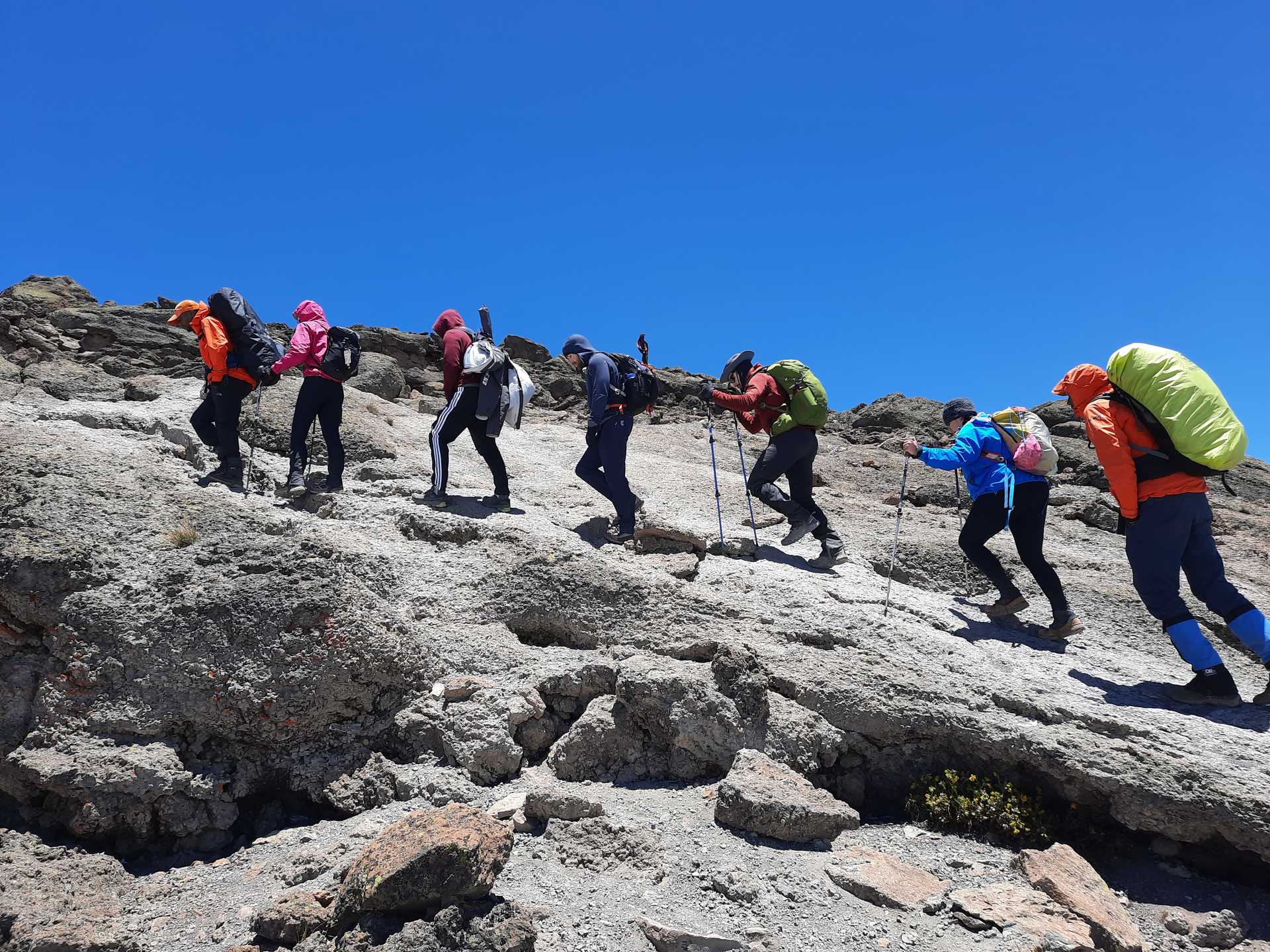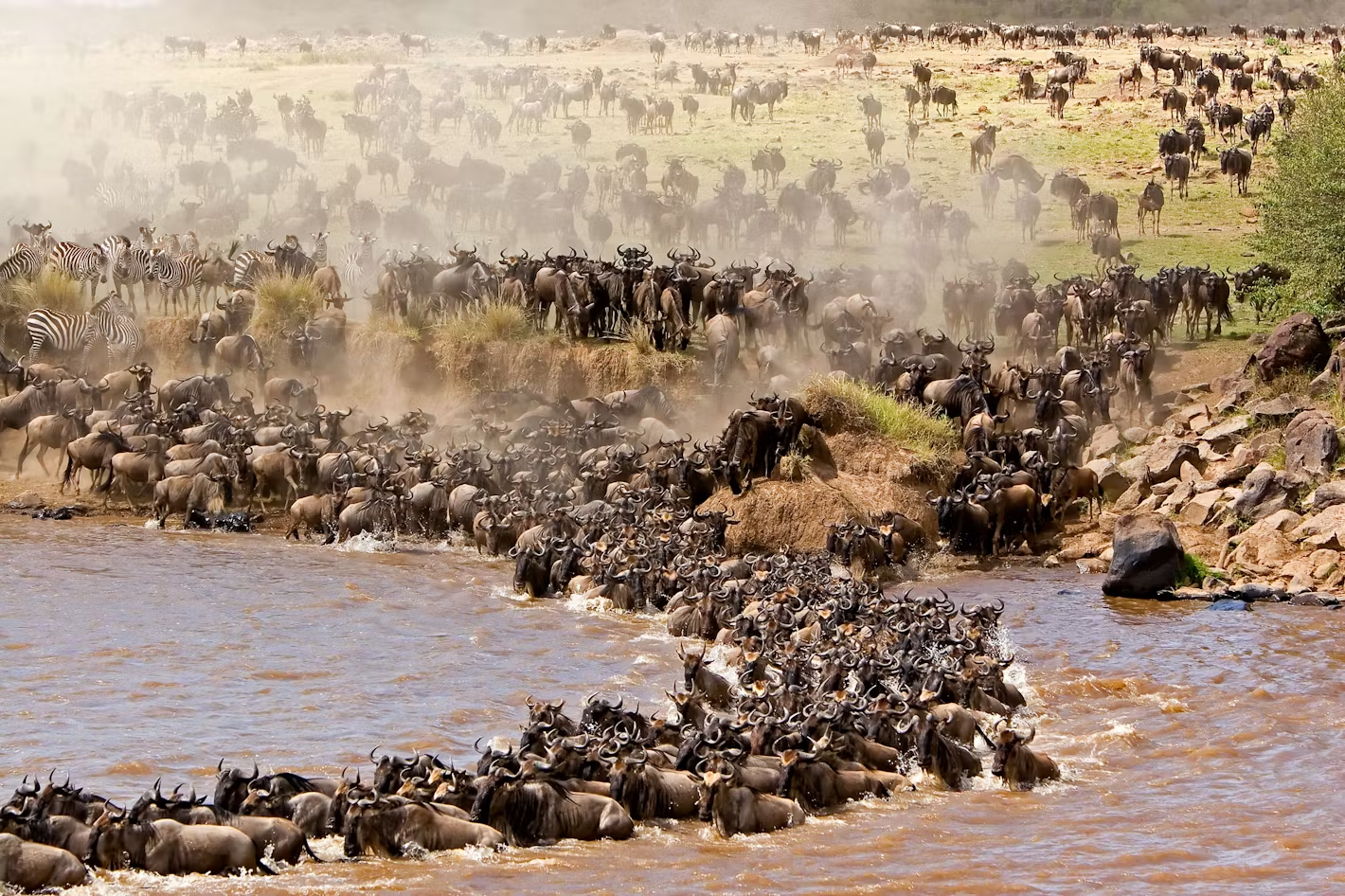From Airport
3 Hours
Size
264 km²
Hidden Gems
Discover Offbeat places
Photo Spots
Best wildlife photo locations
Accommodation
lodges and camps nearby
Overview
Ngorongoro Crater is located in the northern part of Tanzania, within the Ngorongoro Conservation Area. The crater is a collapsed volcanic caldera, and it is one of the most unique and spectacular natural wonders in the world.
It lies approximately 180 kilometers (112 miles) west of Arusha and is accessible by road, typically as part of a safari circuit that includes other famous destinations like Serengeti and Lake Manyara.
Tourist Attractions
- The Crater Floor: The Ngorongoro Crater floor is a rich and biodiverse ecosystem. It’s home to a variety of animals, including the Big Five (lions, leopards, elephants, buffaloes, and rhinoceroses). The floor of the crater is a unique wildlife haven, providing a high density of animals in a relatively small area, making it a prime destination for safari goers.
- Ngorongoro Conservation Area: While the crater is the main attraction, the Ngorongoro Conservation Area itself is also rich in culture and history. The area is home to the Maasai people, who have lived there for centuries, and visitors can experience Maasai culture and traditional life.
- Crater Rim Views: The views from the rim of the Ngorongoro Crater are stunning. From here, you can look down into the caldera, which is often filled with mist in the early mornings, offering breathtaking photo opportunities. The crater’s edges rise over 600 meters (2,000 feet) above the floor.
- Olduvai Gorge: Located within the Ngorongoro Conservation Area, Olduvai Gorge is an archaeological site famous for being one of the most significant locations for the discovery of early human fossils. The gorge provides a fascinating glimpse into the history of human evolution, and visitors can visit the museum there to learn more about this ancient site.
- Lake Magadi: On the crater floor, Lake Magadi is a soda lake that attracts flamingos and other bird species, especially during the wet season. The lake’s alkaline waters and surrounding environment provide a unique ecosystem that adds to the diversity of the crater’s wildlife.
- Wildlife: The Ngorongoro Crater is home to a rich variety of animals, including large herds of wildebeest, zebras, and gazelles. It’s also known for its large population of black rhinoceros, which is rare in other parts of East Africa. The dense population of wildlife makes for some of the most rewarding safari experiences in Tanzania.
Fun Facts and Why It Differs from Other Places
- World’s Largest Unbroken Caldera: The Ngorongoro Crater is often referred to as the world’s largest unbroken caldera. Formed millions of years ago when a giant volcano collapsed, the crater’s floor is 20 kilometers (12 miles) in diameter and provides an almost unparalleled concentration of wildlife in a single area.
- A “Garden of Eden” for Wildlife: The Ngorongoro Crater is often referred to as a “Garden of Eden” due to its biodiversity and pristine landscapes. The fertile soils of the crater floor support lush grasslands and provide an ideal habitat for a wide variety of species. It is one of the few places on Earth where such a diverse ecosystem exists in such a small and enclosed area.
- Home to the Maasai: Unlike other Tanzanian parks where local communities are restricted from living, the Ngorongoro Crater and its surrounding conservation area are home to the Maasai people. The Maasai continue to practice their traditional pastoralist lifestyle, grazing cattle alongside wildlife, creating a unique cultural and environmental interaction.
- A Crater Within a Crater: The crater itself is a caldera, but it’s part of a larger volcanic system that includes a dormant volcano, Mount Oldonyo Lengai, which is located nearby. This adds to the geological significance of the area, making it not only a hotspot for wildlife but also for geology and volcanic activity
Best Time to Visit
- Dry Season (June to October): The best time to visit Ngorongoro Crater is during the dry season, from June to October. During this period, the vegetation thins out, and wildlife congregates around water sources, making it easier to spot animals. The weather is generally pleasant, with cooler temperatures at higher altitudes and warm days in the crater.
- Wet Season (November to May): The wet season, from November to May, is also a good time to visit for birdwatching, as migratory birds arrive in large numbers. The lush green scenery is beautiful, and fewer tourists visit during this time. However, some areas of the crater floor can become muddy, and wildlife may be more dispersed.
Best Accommodations Found at This Place
- Ngorongoro Crater Lodge: This luxury lodge offers a truly unique experience, with its stunning design inspired by traditional Maasai architecture. The lodge is perched on the rim of the crater, offering breathtaking views of the caldera. The service is exceptional, and the location makes it a prime spot for luxury travelers.
- Lion’s Paw Camp: A more intimate and eco-friendly tented camp, Lion’s Paw offers a comfortable and immersive safari experience. Located near the crater’s edge, the camp provides a secluded and peaceful atmosphere for guests.
- Ngorongoro Sopa Lodge: Perched on the crater’s edge, Ngorongoro Sopa Lodge offers spacious rooms with panoramic views. The lodge is a great mid-range option for families or those looking for a more relaxed experience without sacrificing comfort.
- Crater Forest Tented Lodge: This eco-friendly tented lodge is located in a lush forest setting, just a short distance from the crater. It offers a unique and peaceful atmosphere, combining modern amenities with a rustic safari experience.
- Ngorongoro Serena Safari Lodge: Built into the side of the crater rim, Ngorongoro Serena offers stunning views and a great location for safari enthusiasts. The lodge has comfortable rooms with traditional African décor and offers a full range of safari-related services.
FAQs
Ngorongoro Crater is accessible by road from Arusha, which takes about 3-4 hours. There are also chartered flights to the nearby airstrip, and from there, it's a short drive to the crater rim.
Yes, many visitors choose to visit Ngorongoro Crater as part of a day trip, either from Arusha or nearby Serengeti National Park. However, staying overnight in one of the lodges around the crater allows for a more relaxed experience.
Yes, Ngorongoro Crater is safe for tourists. It is one of the most popular and well-maintained safari destinations in Tanzania. However, as with all safaris, it’s important to follow the safety guidelines provided by your guide.
Yes, Ngorongoro Crater is home to all of the Big Five animals. It’s one of the best places in Tanzania to see lions, elephants, buffaloes, leopards, and rhinoceroses in a relatively compact area.
Ngorongoro Crater offers one of the most spectacular and unique safari experiences in Tanzania, with an incredible concentration of wildlife in a breathtaking geological setting. Whether you’re exploring its vibrant ecosystems, interacting with the Maasai, or marveling at the crater’s views, Ngorongoro is a destination that blends natural beauty, rich history, and exceptional wildlife encounters.
Explore other options
Plan and book your trip with Wilderness Moments
Your dream African adventure starts here. From thrilling safaris and cultural encounters to serene beach escapes, let our expert team craft a personalized experience just for you.
